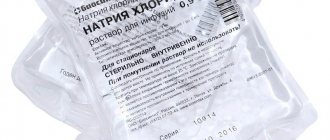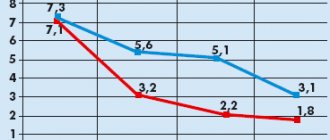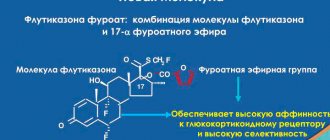Protargol is a hygienic product for use in the sanitation of ENT organs. Contains silver proteinate. Silver has proven itself to be a good antiseptic. The drug has an antiseptic and anti-inflammatory effect. Covers the mucous membrane with a protective film and exhibits an anti-exudative effect. It has been scientifically proven that silver proteinate also has an antiviral effect.
Even in ancient times, BC, our ancestors used dishes made of silver to store food and drinks. It was noticed that water, being in such a vessel, became safe for consumption and did not provoke stomach and intestinal upsets.
Available in the following forms:
- Protargol nasal and ear drops 2% 10 ml;
- Protargol powder for solution 0.2 g with solvent 10 ml for intranasal use;
- Protargol for children (Baby) since. 0.1 g with solvent 10 ml;
- Protargol por. 0.2 g with solvent 10 ml spray.
Pharmacology
The pharmacology of the drug is explained by the proven effect of silver ions, which react with the pathogenic environment. The main idea of using the drug is a natural antiseptic effect on the surface. Thanks to disinfection, protargol stops the spread of the inflammatory process, reducing lesions. The advantage of the drug is the absence of negative reactions from the mucous membranes and epidermis.
That is why silver ions are often used in the formulation of new forms of nasal drops and sprays used for nasal congestion. The main component is silver, which affects the DNA of pathogens and prevents pathogenic flora from multiplying, relieving symptoms. In addition, ions, reacting with proteins, create a protective layer on the inflamed areas of the mucous membranes, which removes the susceptibility of nerve fibers to the irritant and can narrow the lumen of the vascular network. Thanks to this mechanism of action, protargol relieves swelling of inflamed tissues.
general information
Trade name: Protargol-ENT
International nonproprietary or generic name: silver proteinate
Dosage form: tablets for solution for topical use
Composition: Composition per tablet Active ingredient: silver proteinate (protargol) – 200.0 mg. Excipient: hydroxypropyl methylcellulose – 10.0 mg.
Description: round flat-cylindrical tablets from brown to dark brown or almost black with a bluish tint, uneven surface coloring, chamfered and scored.
Pharmacotherapeutic group: Antiseptic
ATX code: R01AX10
Pharmacological properties:
Pharmacodynamics When it enters the body, silver proteinate dissociates to form silver ions, which have an astringent, antiseptic and anti-inflammatory effect. Silver ions actively suppress the reproduction of infectious agents by binding their DNA. The mechanism of action is based on the fact that silver ions precipitate proteins on the damaged mucous membrane and form a protective film. At the same time, sensitivity decreases, blood vessels narrow (this leads to a decrease in swelling) and the inflammatory process is suppressed. Silver ions also inhibit the proliferation of various bacteria. Active against gram-positive and gram-negative bacteria: B.cereus, C.albicans, E.coli, P.aeruginosa. C.aureus, A.niger, S.abony, etc.
Pharmacokinetics: When applied topically, it is practically not absorbed.
Side effects: - allergic reactions: skin itching, irritation of the mucous membrane, urticaria; - burning sensation and numbness; - dry mouth; - redness of the eyes; - anaphylactic shock; - Quincke's edema; - atopic dermatitis. If any of the side effects indicated in the instructions worsen, the drug should be discontinued. If any of the side effects indicated in the instructions get worse or you notice any other side effects not listed in the instructions, tell your doctor.
Overdose
Symptoms: with the recommended method of use, an overdose is unlikely. Possible increased side effects. If a large amount of the drug is accidentally swallowed, irritation of the gastrointestinal tract may occur. With prolonged uncontrolled use of the drug, it is theoretically possible for a very rare disease to appear - argyrosis (gray or bluish discoloration of the skin and mucous membranes). If the recommended dosage regimen is followed, the risk of argyrosis is unlikely.
Treatment: in case of severe irritation, burning, itching of the eyes, skin, mucous membranes, rinse with plenty of water for 15 minutes. Treatment is symptomatic.
Interaction with other drugs Pharmacodynamic, pharmacokinetic interaction: not studied. Pharmaceutical interaction: salts of zinc, copper, lead, silver, mercury, iron, aluminum form insoluble precipitates with a solution of silver proteinate; silver proteinate solution is inactivated by alkaloid salts and organic bases (epinephrine). If you are using the above or other medications (including over-the-counter medications), consult your doctor before using Protargol - ENT.
Special instructions Nasal discharge may turn gray or blue. Read the instructions for use carefully before you start using the drug. Save the instructions, you may need them again. If you have any questions, consult your doctor. The medicine you are using is intended for you personally and should not be given to others as it may cause harm to them even if they have the same symptoms as you.
Effect of the drug on the ability to drive vehicles and machinery. The drug does not affect the ability to drive vehicles or engage in other potentially hazardous activities that require increased concentration and speed of psychomotor reactions.
Conditions of release Dispensed without a prescription.
Shelf life: 2 years. Ready solution - 30 days. Do not use after the expiration date stated on the package.
Storage conditions In original packaging at a temperature not exceeding 25°C. Prepare the solution in a place protected from light at a temperature not exceeding 25°C. Keep out of the reach of children.
Owner of the registration certificate/Legal entity in whose name the registration certificate was issued OJSC Pharmstandard-Leksredstva 305022, Russia, Kursk, st. 2nd Aggregatnaya, 1a/18, (4712) 34-03-13, www.pharmstd.ru
Manufacturer/Organization accepting consumer complaints JSC Pharmstandard-Leksredstva 305022, Russia, Kursk, st. 2nd Aggregatnaya, 1a/18, tel./fax: (4712) 34-03-13.
Indications
I use Protargol as nasal drops for:
- symptoms of acute respiratory infection;
- sinusitis;
- rhinitis;
- pharyngitis.
In addition to ARVI, protargol is indicated for patients with chronic cystitis. In urology, the solution is popular for inflammation of the bladder walls. Getting into it through a catheter, the silver solution soothes and heals the mucous membrane. The course is carried out in combination with systemic antibacterial therapy.
Conditions of use
The action of the drug involves an exclusively local effect on the lesions. The tablet form is not intended for oral administration. The contents must be crushed and dissolved in order to independently prepare a medicinal suspension. Strict adherence to proportions is mandatory: one tablet is dissolved in 10 ml of liquid supplied in the kit. The package contains a bottle that serves as a beaker.
Cooking algorithm:
- Take the bottle.
- Add 10 ml of solvent to it.
- Drop 1 tablet into the solvent.
- Close the lid and shake thoroughly until the tablet is completely dissolved.
Before using the medicine in children, it is first necessary to clear the nasal passages of dried or accumulated mucus. To do this, it is convenient to use a regular saline solution. In order for protargol to penetrate into the labyrinths of the nasal passages as far as possible, the child is placed on his back and 3-5 drops are instilled alternately into each nostril. The frequency of the procedure is twice a day.
Prostolor protargol 200 mg No. 1+ pipette
A country
Russia
The country of production may vary depending on the batch of goods. Please check with the operator for detailed information when confirming your order.
Description
Exhaust gases, industrial products, dust - we are forced to inhale all this every day.
The very first and most important barrier to air purification is our nose. When the mucous membrane is damaged, it can no longer cope with pathogenic bacteria, which in turn leads to problems such as sinusitis and nasopharyngitis (runny nose). Children whose immunity is not yet fully functional suffer especially. PROSTOLOR® protargol, a preparation based on silver proteinate, creates a protective film that helps the nasal mucosa cope with pathogenic bacteria, relieves swelling, and makes breathing easier. SILVER PROTEINATE is the main active ingredient
PROSTOLOR® protargol acts in three directions: 1. Silver ions form a protective film on the damaged mucosal surface, thereby reducing the sensitivity of nerve endings and protecting it from bacteria; 2. ANTI-INFLAMMATORY Constricts blood vessels, relieving nasal congestion 3. ANTISEPTIC Disturbs the process of bacterial reproduction and suppresses their further growth on the mucous membrane
Compound
Chemical or group name: Silver proteinate Dosage form: tablets for the preparation of a solution for local use Composition for 1 tablet: Active ingredient: Silver proteinate (protargol) 200.0 mg Excipients: Povidone K-17 20.0 mg Description: Round flat-cylindrical tablets yellow-brown or brown in color, with a chamfer on both sides and a notch on one side. Inhomogeneity of coloring is allowed. Release form Tablets for the preparation of a solution for topical use, 200 mg. 1 tablet each in a blister pack made of polyvinyl chloride/polyvinylidene chloride film and printed varnished aluminum foil. Solvent – “Water for injection” in 10 ml low-density polyethylene ampoules. 1 blister pack with the drug and 1 ampoule with a solvent, together with a dark glass bottle, equipped with a pipette cap and instructions for use, in a cardboard pack.
Pharmacological properties
Pharmacodynamics When entering the body, silver proteinate dissociates to form silver ions, which have an astringent, antiseptic and anti-inflammatory effect.
By disrupting bacterial DNA replication, silver ions have a bacteriostatic effect. The mechanism of action of PROSTOLOR® protargol is based on the fact that silver ions precipitate proteins on the damaged mucous membrane and form a protective film, which helps reduce the sensitivity of nerve endings and narrow blood vessels (this leads to a decrease in swelling), which in turn inhibits inflammatory reactions. Silver ions also inhibit the proliferation of various bacteria. Active against gram-positive and gram-negative microorganisms: Bacillus cereus, Candida albicans, Escherichia coli, Pseudomonas aeruginosa, Staphylococcus aureus, Aspergillus brasiliensis, Salmonella enterica subsp. enterica serovar abony. Pharmacokinetics The drug PROSTOLOR®protargol is practically not absorbed when applied topically, plasma concentrations are extremely low, systemic effects and cases of silver poisoning have not been identified in clinical practice.
Indications for use
Symptomatic treatment of acute nasopharyngitis (runny nose), sinusitis.
Contraindications
• Hypersensitivity to the components of the drug;
• Pregnancy; • Breastfeeding period; • Atrophic rhinitis. Use during pregnancy and during breastfeeding PROSTOLOR®protargol is contraindicated during pregnancy, as well as during breastfeeding. Breastfeeding should be discontinued if use of the drug is necessary.
Mode of application
Apply the solution topically. To prepare a 2% solution, 1 tablet (200 mg) is dissolved in 10 ml of the supplied solvent. After dilution, store the solution at a temperature of 2 to 8 °C for no more than 30 days. Shake before use. In children under 6 years of age, as well as over 6 years of age and adults, use a 2% solution of PROSTOLOR®protargol, instilling 1-2 or 3-5 drops of the solution 2-3 times a day, respectively, into each nostril.
Side effect
The incidence of side effects after using the drug is classified according to WHO recommendations: very common – >10%; frequent - >1% and 0.1% and 0.01% and Immune system disorders: rare - allergic reactions (itching, urticaria), very rare - anaphylactic shock, Quincke's edema, atopic dermatitis. General disorders and disorders at the injection site: rare - irritation, burning sensation and numbness of the nasal mucosa. Other: rare - dry mouth, red eyes. If you notice any adverse reactions, including those not listed in these instructions for use, you should stop using the drug and consult a doctor.
Overdose
No cases of overdose have been identified.
Interaction
No interactions with other drugs have been identified.
special instructions
Before using the drug, you should consult a specialist. Read the instructions for use carefully before you start using the drug. Save the instructions, you may need them again. The medicine you are using is intended for you personally and should not be given to others as it may cause harm to them even if they have the same symptoms as you. Before use, it is necessary to clean the nasal passages. Do not exceed recommended doses, especially in children and the elderly. The drug should not be used for more than 7 days unless the doctor recommends a different duration of treatment. If symptoms persist after this time, you should consult a doctor. Nasal discharge may turn gray or blue. Effect on the ability to drive vehicles or operate machinery The drug does not affect the ability to drive vehicles or operate machinery that requires rapid psychomotor reactions.
Dosage
Treatment of rhinitis and relief of symptoms of acute respiratory infections in children:
- instill no more than 5 drops into each nasal passage;
- the procedure is repeated morning and evening, regularly;
- Duration of treatment – up to 14 days.
Treatment of conjunctival inflammation in adults:
- 2 drops of solution are applied under the lower eyelid;
- You can repeat the procedure up to 4 times a day;
- Duration of treatment – up to 7 days.
If the condition of the lacrimal canals and the inner surface of the mucous membrane of the eyelids has not improved 7 days after using protargol, it is necessary to adjust the treatment by visiting your doctor.
For chronic cystitis:
- the prepared solution is injected through a catheter into the previously emptied bladder;
- refrain from urinating for 1.5-2 hours.
- repeat the procedure once a day.
- The duration of the course can vary from 7 to 14 days, depending on the patient’s symptoms.
Adverse reactions
Rarely: urticaria, burning, irritation of the mucous membrane of the eye or nose, itching, depending on what the drug was used for, in the form of eye drops or nasal drops. The mucus that comes out may turn gray or blue.
If reactions occur that are not listed in the instructions, you should consult a doctor.
Protargol should be stored at a temperature not exceeding 25 degrees Celsius. The prepared solution is stored in the refrigerator for no more than 30 days. If ready-made drops are used, they should be used for no more than 15 days after opening the bottle.
Additional Information
The use of protargol in ENT practice can cause darkening of the mucus discharged from the nasal passages, which is not a pathology and does not require medical intervention.
During treatment of the bladder walls with protargol, drops of blood may appear in the urine, which is explained by non-critical injury to the urethra by the catheter. Urine, when mixed with the drug, becomes dark, almost black, which is the absolute norm. Urine changes color once - only during the emptying of the bladder, after the prescribed 2 hours of abstinence after the infusion procedure.
For the treatment of bacterial infections, it is not recommended to use protargol as the main drug. Its beneficial effect is justified only as a complex therapy, simultaneously with prescribed systemic antibacterial drugs.
Note!
The description of the drug Protargol on this page is a simplified author’s version of the apteka911 website, created on the basis of the instructions for use.
Before purchasing or using the drug, you should consult your doctor and read the manufacturer's original instructions (attached to each package of the drug). Information about the drug is provided for informational purposes only and should not be used as a guide to self-medication. Only a doctor can decide to prescribe the drug, as well as determine the dose and methods of its use.









